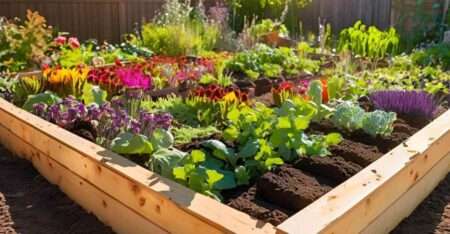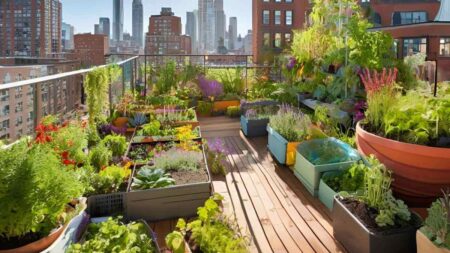Starting a vegetable garden is an exciting venture, and choosing the best soil for veggies is crucial to your success. Whether you’re a beginner gardener, a family looking to grow fresh produce, or an eco-conscious individual wanting to cultivate a healthy garden, understanding soil types and their benefits can significantly impact your gardening experience. In this guide, we’ll explore everything you need to know about the best soil for veggies, offering practical tips and insights to help your garden flourish.
Understanding Soil Basics
What is Soil?
Soil is a complex ecosystem that provides essential nutrients, water, and support to plants. It consists of mineral particles, organic matter, water, and air. The composition and structure of soil can vary greatly depending on location, climate, and the surrounding environment.
Importance of Soil in Vegetable Gardening
The best soil for veggies is essential for several reasons:
- Nutrient Supply: Soil provides the necessary nutrients that vegetables need to grow strong and healthy.
- Water Retention: Good soil retains moisture, ensuring that your plants receive the water they need without becoming waterlogged.
- Aeration: Well-aerated soil allows roots to breathe, promoting healthy growth.
- pH Balance: The pH level of your soil affects nutrient availability, influencing the overall health of your plants.
Types of Soil for Vegetable Gardening
1. Loamy Soil
Characteristics: Loamy soil is a balanced mix of sand, silt, and clay, making it ideal for vegetable gardening. It retains moisture while draining excess water, providing the perfect environment for root systems.
Benefits:
- Rich in organic matter.
- Good drainage and aeration.
- Retains moisture well.
Best Vegetables: Almost all vegetables thrive in loamy soil, especially root vegetables like carrots and beets.
2. Sandy Soil
Characteristics: Sandy soil has larger particles, allowing for quick drainage. While it heats up quickly in the spring, it often lacks nutrients.
Benefits:
- Drains well, preventing waterlogging.
- Warms up quickly, extending the growing season.
Best Vegetables: Root vegetables such as carrots, radishes, and potatoes flourish in sandy soil. However, it may require frequent fertilization to provide necessary nutrients.
3. Clay Soil
Characteristics: Clay soil is composed of very fine particles, leading to compactness and poor drainage. It can become waterlogged and is often difficult to work with.
Benefits:
- Retains nutrients effectively.
- Holds moisture well.
Best Vegetables: Beans, peas, and squashes can thrive in clay soil if properly amended. To improve drainage and aeration, mix in organic matter like compost.
4. Silt Soil
Characteristics: Silt soil has fine particles that retain moisture and nutrients well, but it can also compact easily.
Benefits:
- Retains moisture and nutrients effectively.
- Offers good fertility.
Best Vegetables: Leafy greens like lettuce and spinach do well in silt soil due to its nutrient-rich properties.
Key Components of Healthy Soil
To create the best soil for veggies, it’s essential to understand its fundamental components:
1. Organic Matter
Importance: Organic matter, such as compost and well-rotted manure, enriches soil, improves structure, and enhances nutrient availability. It also encourages beneficial microorganisms that aid plant growth.
2. pH Level
Ideal Range: Most vegetables thrive in slightly acidic to neutral soil, with a pH level between 6.0 and 7.0. You can test your soil’s pH using a home testing kit.
Adjusting pH: To lower pH, add sulfur or organic matter; to raise it, add lime.
3. Nutrient Content
Essential Nutrients: Key nutrients for vegetables include nitrogen (N), phosphorus (P), and potassium (K). Conduct a soil test to determine nutrient levels and adjust accordingly.
Fertilization: Use organic fertilizers like fish emulsion, bone meal, or compost to enrich your soil.
How to Prepare Your Soil for Vegetable Gardening
Step 1: Soil Testing
Start by testing your soil for pH and nutrient levels. This step will help you identify any deficiencies and guide your amendments.
Step 2: Amendments
Depending on your soil type and test results, you may need to amend your soil:
- For Loamy Soil: Add organic matter to maintain fertility.
- For Sandy Soil: Incorporate compost to improve nutrient retention.
- For Clay Soil: Mix in sand and organic matter to enhance drainage.
- For Silt Soil: Add organic matter to prevent compaction and maintain aeration.
Step 3: Tilling
Tilling your soil helps mix amendments and aerate it. Be careful not to over-till, as this can disrupt soil structure.
Step 4: Mulching
After planting, apply a layer of mulch around your plants. Mulch helps retain moisture, suppress weeds, and gradually adds organic matter as it breaks down.
Tips for Maintaining Healthy Soil
- Crop Rotation: Rotate your crops each season to prevent nutrient depletion and reduce pest problems.
- Cover Crops: Plant cover crops in the off-season to enrich soil, prevent erosion, and suppress weeds.
- Organic Practices: Emphasize organic practices by avoiding synthetic pesticides and fertilizers to maintain soil health and ecosystem balance.
- Regular Testing: Conduct soil tests every few years to monitor pH and nutrient levels, adjusting your practices as necessary.
Frequently Asked Questions/FAQs
What is the best type of soil for vegetable gardening?
The best type of soil for vegetable gardening is loamy soil, which is a balanced mix of sand, silt, and clay. It retains moisture while providing excellent drainage and aeration, making it ideal for a variety of vegetables.
How can I improve my garden soil for growing vegetables?
To improve your garden soil for growing vegetables, incorporate organic matter such as compost or well-rotted manure. Testing your soil’s pH and nutrient levels can also help you make necessary amendments for optimal plant health.
Can I use potting soil for growing vegetables in a garden?
While potting soil is suitable for container gardening, it’s generally not ideal for in-ground vegetable gardens. Instead, use garden soil or amend your existing soil with compost to ensure it provides the necessary nutrients and drainage for healthy vegetable growth.
Conclusion: Start Your Vegetable Gardening Journey!
Choosing the best soil for veggies is a fundamental step in establishing a thriving vegetable garden. By understanding soil types, their benefits, and how to prepare and maintain healthy soil, you set the foundation for successful gardening. Remember, gardening is a journey, and every step you take brings you closer to enjoying the rewards of your labor.
So, gather your tools, select your favorite vegetables, and start creating the garden of your dreams! With the right soil and a little dedication, you’ll cultivate a bountiful harvest for your family and community. Happy gardening!
Read Also
Easy Pest Control Tips: Protect Your Veggie (homegardenliveadviceinc.com)









6 Comments
Choosing the right soil is crucial for vegetable growth, with well-draining, nutrient-rich soil being essential for ensuring healthy, thriving plants.
Very informative! The right soil truly makes a difference in growing healthy vegetables. Thanks for sharing this guide!
The blog post explore everything you need to know about the best soil for veggies, offering practical tips and insights to help your garden flourish.
Discover the perfect soil mix for veggies—rich, well-drained, and nutrient-packed for thriving plants!
The right soil is the foundation of a thriving vegetable garden. Discover tips and insights to choose the best soil for healthy, abundant veggies!
Pingback: 9 Best Vegetable Gardening Techniques For Abundant Yields